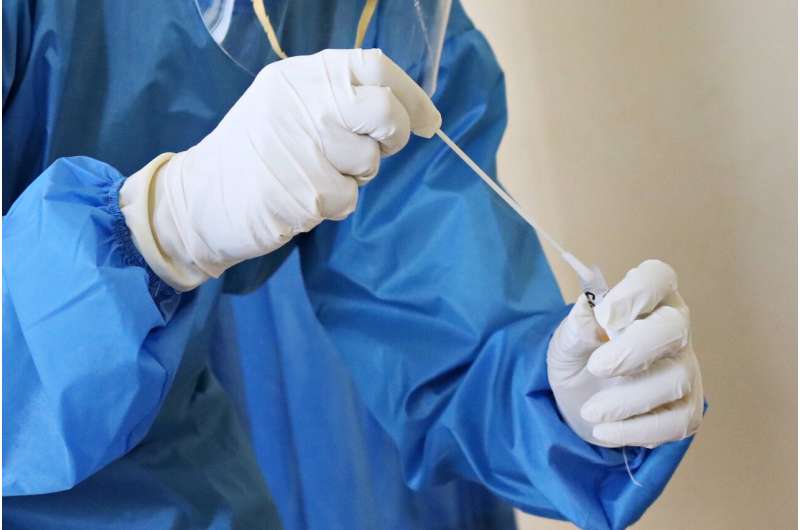
Levels of adherence to the UK’s test, trace, and isolate system and understanding of the main symptoms of COVID-19 are low, particularly among men, younger age groups, people with a dependent child in the home, key workers, and those experiencing greater financial hardship, finds an analysis of online survey data published by The BMJ today.
The data show that only half of respondents could identify the main symptoms of COVID-19, around 1 in 5 would seek a test if they developed symptoms, and around 80% would share details of close contacts if they tested positive.
Although some improvement has occurred over time, the researchers warn that the effectiveness of the current system is limited, and that policies to support people financially and practically will be key to increasing uptake.
As in other countries, the test, trace, and isolate system is a cornerstone of the UK’s COVID-19 recovery strategy. Success relies on how well people adhere to guidance on testing, provide details of contacts, and self-isolate, which in turn depends on their knowledge, motivation, and opportunity to do so.
To explore this in more detail, a team of researchers set out to investigate rates of adherence to the UK’s test, trace, and isolate system over the first 11 months of the COVID-19 pandemic.
Their findings are based on 74,697 responses to online surveys from 53,880 people aged 16 years or older living in the UK. In all, 37 survey waves were carried out from 2 March 2020 to 27 January 2021, with about 2,000 participants in each wave.
Participants were asked to identify symptoms of COVID-19 (symptoms promoted to members of the UK public as the “main” symptoms of COVID-19 in government guidance: cough, high temperature or fever, and loss of sense of smell or taste) and answer questions about their actions (whether they stayed at home or requested a test), and intending to share details of close contacts if they developed symptoms.
Other information, including age, sex, ethnicity, employment, education, region of residence, number of people living in their household, and chronic illness was also recorded.
Only around half of participants identified the main symptoms of COVID-19. Across all waves, intention to fully self-isolate if symptoms were to develop was around 70%. However, self-reported adherence to full self-isolation (not leaving home at all in the first 10 days after symptoms developed) was 43%, increasing to 52% in the latest wave of data collection (25-27 January 2021).
Common reasons given for not fully self-isolating included to go to the shops or work, for a medical need other than COVID-19, to care for a vulnerable person, to exercise or meet others, or because symptoms were only mild or got better.
Intention to request a test if symptoms were to develop was 62%. However, across all waves, only 18% reported requesting a test after symptoms developed, increasing to 22% from 25 to 27 January 2021.
Across all waves, 79% said they intended to share details of close contacts if they tested positive for COVID-19, increasing to 82% from 25 to 27 January 2021.
The most commonly reported reasons for not intending to share details were not knowing if data would be secure and confidential, thinking that the contact tracing system was not accurate and reliable, and not knowing what would happen to the data.
Factors associated with non-adherence included being male, younger age, having a dependent child in the household, lower socioeconomic grade, greater financial hardship during the pandemic, and working in a key sector.
This is an observational study, so can’t establish cause, and results relied on self-reporting, which may have affected accuracy. However, the large sample size allowed the team to investigate uncommon behaviours and to examine uptake of protective behaviours and knowledge over time.
As such, the researchers say: “With such low rates for symptom recognition, testing, and full self-isolation, the effectiveness of the current form of the UK’s test, trace, and isolate system is limited.”
“People need help to achieve their intentions. While intentions to engage in test, trace, and isolate behaviours are high, a greater focus on financial and practical support is likely to enable more people to translate their intentions into behaviour,” they add. “Targeting messaging and policies to men, younger age groups, and key workers might also be necessary.”
This study is an important reminder of the gaps and vulnerabilities associated with test, trace, and isolate programmes, say researchers from Taiwan and the US in a linked editorial.
Taken together, if respondents were a representative sample of people with symptoms, they say contacts of only 8% of all people with symptoms of COVID-19 would be identifiable and therefore eligible for subsequent isolation and quarantine efforts.
Ultimately, symptom based and case based interventions alone are highly unlikely to contain the COVID-19 pandemic, they write. A more realistic expectation is that an effective test, trace, and isolate programme can be one component of a more comprehensive strategy, involving physical distancing, use of face masks, and possibly mass testing are needed, as has been seen in settings such as Singapore and Taiwan.
Source: Read Full Article
